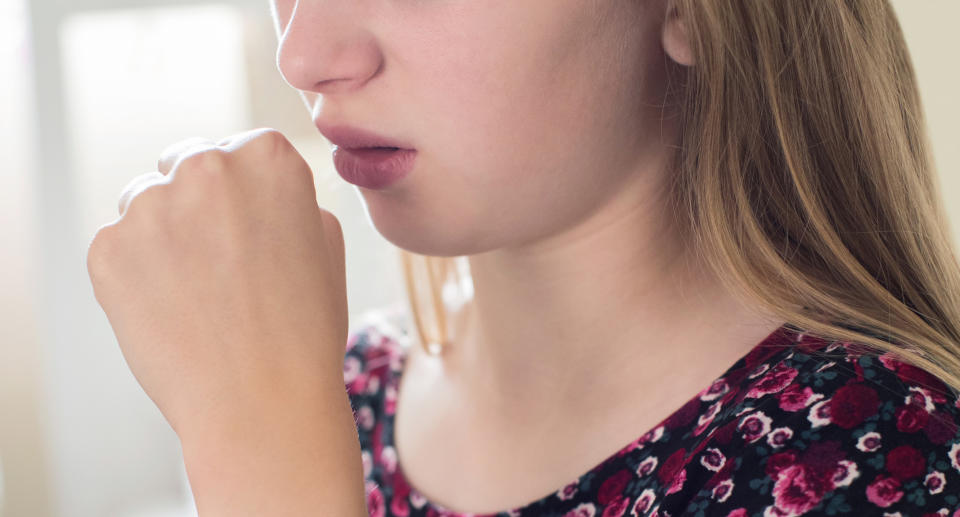Whooping cough is making a comeback — here’s what you need to know
In the past few months, whooping cough, a highly contagious respiratory infection, has been spreading rapidly, particularly in areas throughout Idaho and Washington. UC Davis Children’s Hospital put forth a warning saying, “This year is likely to be an epidemic year.” And late spring is when the epidemic is expected to hit.

Pertussis (aka whooping cough), caused primarily by the bacterium Bordetella pertussis, has reemerged in several countries recently — even those countries with sustained vaccine coverage. Whooping cough, also sometimes called the 100-day cough, is a severe cough that results in roughly 200,000 cases in the U.S. annually, with an average of 20 babies dying domestically per year from the infection (most of them because they were too young to be vaccinated). Although it starts out like a cold — runny nose, nasal congestion, watery eyes, fever — pertussis is far from the common cold. A week or so later, a cough can lead to vomiting, a red or blue face, or extreme fatigue, and end with a high-pitched “whoop” sound during the next breath of air.
Prior to the 1940s, when the whooping cough vaccine was invented, whooping cough was extremely common, especially in children. That vaccine was the one used until DTaP, with fewer side effects, was created in the 1990s, but whooping cough has not been eradicated. In fact, in 2012 there were 50,000 infections in the U.S. (the most since 1955). The latest U.S. Centers for Disease Control and Prevention estimates indicate that 20,762 individuals contracted the disease in 2015, including 2,709 cases in infants (including three deaths) all younger than 1 year of age, the population most at risk of severe complications.
Many believe an inefficient vaccine is to blame for the ongoing prevalence of pertussis. A January 2014 study demonstrated that giving baboons a pertussis vaccine prevented them from developing symptoms of whooping cough but failed to stop transmission. A 2015 study blamed vaccinated people who are infectious but do not display the symptoms of whooping cough, suggesting that the vaccine is not as effective as once thought.

But the most recently published study of pertussis conducted at the University of Michigan debunks that thought. “Conventional wisdom is that the current vaccine is the problem, but that’s not consistent with what we see,” said study co-author Aaron King, a University of Michigan infectious disease ecologist and applied mathematician.
“Our results are important because they show that recent trends in pertussis are not necessarily caused by recent changes in epidemiology or biology,” said first author Matthieu Domenech de Cellès, formerly a UM postdoctoral researcher under King, now at the Institut Pasteur in Paris.
Instead, natural population turnover, incomplete vaccination coverage, and slowly waning protection from a highly effective yet imperfect vaccine best explain the resurgence of whooping cough, according to this research.
The researchers also concluded that the introduction of the first pertussis vaccine in the late 1940s led to a honeymoon period, which was “a time of very low disease incidence following the start of a vaccination program.” The return of pertussis in recent decades signals the end of that period, according to the researchers.
Without any other proven effective option, getting the vaccine is still the best way to protect yourself from whooping cough. The study recommends that infants receive four doses of the DTaP (diphtheria, tetanus, and pertussis) vaccine by 18 months of age, and children receive Tdap whooping cough “booster” doses, which help with the vaccine’s waning effectiveness, at 4-6 years of age and 11-18 years of age. According to the CDC, if adults have never been vaccinated, they are encouraged to receive the Tdap booster, as are unvaccinated kids between 7 and 10. Pregnant women should get the Tdap booster even if they were previously vaccinated.
While everyone should protect themselves, the youngest members of the population are most vulnerable when it comes to whooping cough. “Our results indicated that the core transmission group is schoolchildren,” the study reports. “Therefore, efforts aimed at curtailing transmission in the population at large, and especially in vulnerable infants, are more likely to succeed if targeted at schoolchildren, rather than adults.”
Since newborns are the most at risk yet too young to get the vaccine if they are under 2 months old, medical professionals recommend cocooning: immunizing household and family members who will be in close contact with the baby.
Since pertussis is contracted by close contact with someone infected, the CDC also recommends general hygienic practices like disposing of used tissues, washing hands, covering coughs or coughing into elbows, etc.
If you exhibit symptoms, you should of course go to the doctor. However, don’t let the name fool you: Pertussis is not always accompanied by a “whooping” sound. A prolonged cough is reason enough to get checked out.
Read more from Yahoo Lifestyle:
What to do when your friends and family hate your significant other
Alarming STD outbreak among suburb’s youth reflective of nationwide trend
A man in the U.K. got ‘super-gonorrhea’ — are you at risk too?
Follow us on Instagram, Facebook, and Twitter for nonstop inspiration delivered fresh to your feed, every day.
